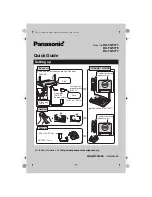
MERLIN LEGEND Communications System Release 5.0
Feature Reference
555-650-110
Issue 1
June 1997
Features
Page 289
Group Calling
assigned as its message-waiting receiver, but the same extension can be
assigned as the message-waiting receiver for more than one calling group.
Message-waiting indications cannot be sent to the extension number assigned to
the group unless this option is programmed. The message-waiting receiver
cannot distinguish between messages left for the calling group and personal
messages.
Calls-in-Queue Alarm Threshold
2
2
The Calls-in-Queue Alarm Threshold is the number of calls (1–99) allowed in the
queue before calling group supervisors and members are notified that too many
calls are waiting for attention. In Release 5.0 and later systems, the system
manager can assign three threshold levels to indicate increasing levels of
severity, as explained later in this section. When the number of waiting calls is
equal to or greater than the programmed Calls-in-Queue Alarm Threshold setting
(factory default is one call), the calling group members can be notified in one of
two ways:
■
Through an external alert connected to an MLX telephone by using a
Multi-Function Module (MFM); the MFM is set for SAA operation and
programmed as the alert. Because the tone sent to the alert is continuous,
use only a device such as a strobe light, which stays lit until the number of
calls drops below the limit. Only one external alert can be assigned to each
calling group, and each external alert can be assigned to only one calling
group. You should not use a Supplemental Alert Adapter with an analog
multiline telephone because a steady tone is emitted from the telephone
when the visual alert is on.
The system does not block the programming of any extension jack
(including extension jacks used for telephones or operator consoles) as an
external alert to provide the calls-in-queue alarm. However, programming a
telephone or console extension as a calls-in-queue alarm is not
recommended because the telephone alerts continuously with a tone while
the number of calls in the calling group queue is equal to or greater than
the programmed threshold or in Release 5.0 and later systems, Threshold
3 (see the discussion later in this topic). Single-line telephones do not ring
or generate any kind of tone, nor does any device connected to an MFM
that is set for tip/ring operation.
■
Through the LED associated with a Calls-in-Queue Alarm button (inside
Auto Dial button) programmed with the calling group’s extension or a DSS
button that corresponds to the extension. In Release 5.0 and later systems,
the DSS button flashes if the number of calls waiting in the queue is greater
than or equal to Threshold 1 but fewer than Threshold 3. The LED lights
steadily if the number of waiting calls is greater than or equal to Threshold
3. If three thresholds are needed, an inside Auto Dial button should be
used to monitor queue status. There is no limit to the number of buttons
that can be programmed to provide the calls-in-queue alarm indication.
















































